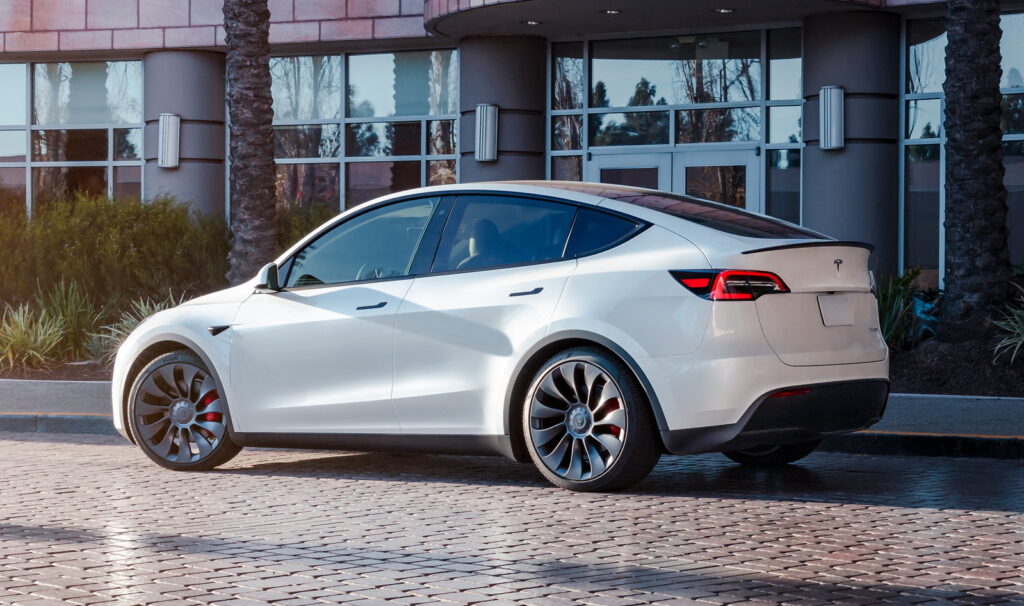- Tesla now offers lease buyouts, something every other automaker has been doing for years.
- Leasing a Tesla could be smart if you don’t qualify for the $7,500 federal EV tax rebate.
- The company also offers 0% APR financing for the Model 3 and Y, which might be a better deal.
Tesla, always the one to move the finish line just as its customers are about to cross it, has finally decided to let lessees buy out their leases. Of course, this is something nearly every other manufacturer has been doing for, oh, forever, but still, it’s a welcome change. After all, the inability to buy out a lease has long been a consistent gripe among Tesla owners.
More: Everything We Know About The Facelifted Tesla Model Y Juniper
The announcement came via Tesla’s website late Wednesday night, with the FAQ section stating: “Starting November 27, 2024, all leased Cybertruck, Model S, Model 3, Model X, and Model Y vehicles are eligible for purchase”. That is, unless you’re a resident of Iowa or Louisiana, in which case, just stop reading because you’re excluded. The fine print also reveals that third-party dealerships can now buy out the leased vehicles.
Why Is Lease Buyout A Big Deal?
Simply put, it gives you an option to hedge your bets. After completing a 24- or 36-month lease, you can crunch the numbers and decide whether returning the car or buying it out makes more financial sense. Depending on the model (think popular Subarus) and your lease terms, you could even turn a profit by selling the car in the used market. It all comes down to how the car holds up against depreciation—and whether you can outsmart the numbers. That’s a big if with EVs, but in any case, you have the option.
How To Buy Out Your Lease
As is typical with Tesla, everything—and we mean everything—from purchasing your vehicle to opening your car’s charging port, is handled through the Tesla app. Here’s the rundown:
1) Open the Tesla app.Tap ‘Financing.’
2) Tap ‘Lease Details.’
3) Tap ‘Manage Lease.’
4) Select ‘Purchase Vehicle.’
5) Confirm that you want to buy the vehicle.
Of course, Tesla will charge a purchase fee of up to $350, which isn’t exactly a shocker (remember the $250 non-refundable fee when placing an order?). While this fee is standard in the automotive industry, it’s still an annoying extra on top of the overall cost.
Do The Math First

Despite the appeal of this new option, it’s worth doing the math first—and saying a quick prayer to the financial and depreciation gods—before deciding if buying out your lease is a better deal than simply purchasing or financing the vehicle.
More: California To Reinstate EV Rebates If Trump Scraps Tax Credit, Just Not For Tesla
In fact, if you’re considering a new purchase, it’s worth noting that Tesla is currently offering 0% financing for up to 36 months on the Model 3 with 20% down (which also includes the $7,500 federal tax credit, if you qualify). The soon-to-be-replaced Model Y offers the same terms for up to 60 months, so there may be more attractive financing options available than leasing.
Understanding Key Lease Terms
When leasing a Tesla, there are three key factors to consider, aside from the standard terms like length and annual mileage (e.g., 36 months and 10,000 miles a year). These are:
- Capitalized Cost : This is the negotiated price of the vehicle, including taxes and fees, though it’s non-negotiable with Tesla.
- Money Factor: Essentially the interest rate expressed as a small decimal (e.g., 0.00125), which can be converted to an interest rate by multiplying by 2,400. In this case, 0.00125 equals 3% APR. While you can negotiate the money factor with many brands, Tesla isn’t one of them, and it is directly tied to your credit score, so YMMV.
- Residual Value: This is the amount the manufacturer predicts the vehicle will be worth at the end of the lease term, and it’s non-negotiable.
Breaking Down Lease Payments

Let’s break this down further. Say the car’s final price is $40,000, and Tesla estimates the vehicle will be worth $20,000 (50% residual value) at the end of the lease. You’re essentially paying the $20,000 difference over your monthly payments, with interest.
For a 36-month lease with no money down and a money factor of 0.00125 (3% APR), your total lease payments would amount to $22,700—about $631 per month. If the APR were 9%, you’d pay $781 a month.
If you financed the same amount with the current offers, at 0% APR, you’d pay $556 a month.
While it’s impossible to give an exact number without going through the lease process (which, admittedly, is a bit impractical for us), discussions on various forums and Reddit threads suggest Tesla’s lease APR hovers around 8-10%. But, as always, your mileage may vary depending on your credit score, the current offers, and your state of residence. If the rate is on the high end, you might want to consider financing with 0% APR instead. It could save you a lot of cash in the long run.
The $7,500 Loophole
Leasing and buying out could actually make sense if you don’t qualify for the $7,500 federal tax rebate due to income limitations. Since leased vehicles automatically factor the rebate into the monthly payment (regardless of your income or where the car is made) it’s possible that you could lease a Tesla (or any other EV, for that matter) and then buy it out, pocketing the rebate. Just make sure to read the fine print and consult a Tesla advisor first.
Do your homework, compare your options, and, whatever you do, don’t rush into a decision. As with every carmaker, even the simplest choice comes with a catch.





